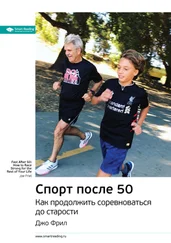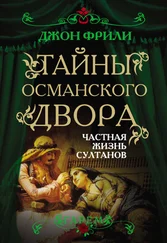Graham, T. E., and L. L. Spriet. Caffeine and Exercise Performance // Sports Science Exchange 9, no. 1 (1996): 1–6.
Graham, T. E., et al. Metabolic and Exercise Endurance Effects of Coffee and Caffeine Ingestion // Journal of Applied Physiology 85, no. 3 (1998): 883–889.
Greiwe, J. S., et al. Effects of Endurance Exercise Training on Muscle Glycogen Accumulation in Humans // Journal of Applied Physiology 87, no. 1 (1999): 222–226.
Guilland, J. C., et al. Vitamin Status of Young Athletes Including the Effects of Supplementation // Medicine and Science in Sports and Exercise 21 (1989): 441–449.
Hagberg, J. M. Physiological Implications of the Lactate Threshold // International Journal of Sports Medicine 5 (1984): 106–109.
Heath, G. A Physiological Comparison of Young and Older Endurance Athletes // Journal of Applied Physiology 51, no. 3 (1981): 634–640.
Heath, G. W., et al. Exercise and Upper Respiratory Tract Infections: Is There a Relationship? // Sports Medicine 14, no. 6 (1992): 353–365.
Heil, D. P., et al. Cardiorespiratory Responses to Seat-Tube Angle Variation during Steady-State Cycling // Medicine and Science in Sports and Exercise 27, no. 5 (1995): 730–735.
Herman, E. A., et al. Exercise Endurance Time as a Function of Percent Maximal Power Production // Medicine and Science in Sports and Exercise 19, no. 5 (1987): 480–485.
Hickson, R. C., et al. Potential for Strength and Endurance Training to Amplify Endurance Performance // Journal of Applied Physiology 65 (1988): 2285–2290.
Hickson, R. C., et al. Reduced Training Intensities and Loss of Aerobic Power, Endurance and Cardiac Growth // Journal of Applied Physiology 58 (1985): 492–499.
Hickson, R. C., et al. Strength Training Effects on Aerobic Power and Short-Term Endurance // Medicine and Science in Sports and Exercise 12 (1980): 336–339.
Hoffman-Goetz, L., and B. K. Peterson. Exercise and the Immune System: A Model of the Stress Response? // Immunology Today 15, no. 8 (1994): 382–387.
Holly, R. G., et al. Stretch-Induced Growth in Chicken Wing Muscles: A New Model of Stretch Hypertrophy // American Journal of Physiology 7 (1980): C62–C71.
Hooper, S. L., and L. T. MacKinnon. Monitoring Overtraining in Athletes: Recommendations // Sports Medicine 20, no. 5 (1995): 321–327.
Hooper, S. L., et al. Markers for Monitoring Overtraining and Recovery // Medicine and Science in Sports and Exercise 27 (1995): 106–112.
Hopkins, S. R., et al. The Laboratory Assessment of Endurance Performance in Cyclists // Canadian Journal of Applied Physiology 19, no. 3 (1994): 266–274.
Hopkins, W. G. Advances in Training for Endurance Athletes // New Zealand Journal of Sports Medicine 24, no. 3 (1996): 29–31.
Horowitz, J. F., et al. Pre-exercise Medium-Chain Triglyceride Ingestion Does Not Alter Muscle Glycogen Use during Exercise // Journal of Applied Physiology 88, no. 1 (2000): 219–225.
Hortobagyi, T., et al. Effects of Simultaneous Training for Strength and Endurance on Upper– and Lower– Body Strength and Running Performance // Journal of Sports Medicine and Physical Fitness 31 (1991): 20–30.
Houmard, J. A., et al. The Effects of Taper on Performance in Distance Runners // Medicine and Science in Sports and Exercise 26, no. 5 (1994): 624–631.
Houmard, J. A., et al. Reduced Training Maintains Performance in Distance Runners // International Journal of Sports Medicine 11 (1990): 46–51.
Howe, M. J., J. W. Davidson, and J. A. Sluboda. Innate Talents: Reality or Myth? // Behavior and Brain Science 21, no. 3 (1993): 399–407.
Ivy, J. L., et al. Muscle Respiratory Capacity and Fiber Type as Determinants of the Lactate Threshold // Journal of Applied Physiology 48 (1980): 523–527.
Jackson, Susan A., and Mihaly Csikszentmihalyi. Flow in Sports . Champaign, IL: Human Kinetics, 1999.
Jacobs, I., et al. Blood Lactate: Implications for Training and Sports Performance // Sports Medicine 3 (1986): 10–25.
Janssen, P.G.J.M. Training, Lactate, Pulse Rate. Kempele, Finland: Polar Electro Oy, 1989.
Jeukendrup, A. E., et al. Physiological Changes in Male Competitive Cyclists after Two Weeks of Intensified Training // International Journal of Sports Medicine 13, no. 7 (1992): 534–541.
Johnston, R. E., et al. Strength Training for Female Distance Runners: Impact on Economy // Medicine and Science in Sports and Exercise 27, no. 5 (1995): S47.
Jung, A. P. The Impact of Resistance Training on Distance Running Performance // Sports Medicine 33, no. 7 (2003): 539–552.
Kearney, J. T. Training the Olympic Athlete // Scientific American, June 1996: 52–63.
Keast, D., et al. Exercise and the Immune Response// Sports Medicine 5 (1988): 248–267.
Kent-Braun, J. A., et al. Skeletal Muscle Oxidative Capacity in Young and Older Women and Men // Journal of Applied Physiology 89, no. 3 (2000): 1072–1078.
Kindermann, W., et al. The Significance of the Aerobic-Anaerobic Transition for the Determination of Workload Intensities during Endurance Training // European Journal of Applied Physiology 42 (1979): 25–34.
Klissouras, V. Adaptability of Genetic Variation // Journal of Applied Physiology 31 (1971): 338–344.
Knuttgen, H. G., et al. Physical Conditioning through Interval Training with Young Male Adults // Medicine and Science in Sports and Exercise 5 (1973): 220–226.
Kokkonen, J., et al. Acute Muscle Stretching Inhibits Maximal Strength Performance // Research Quarterly for Exercise and Sport 69 (1998): 411–415.
Kovacs, E. M. R., et al. Effect of Caffeinated Drinks on Substrate Metabolism, Caffeine Excretion and Performance // Journal of Applied Physiology 85, no. 2 (1998): 709–715.
Kraemer, W. J., et al. Compatibility of High-Intensity Strength and Endurance Training on Hormonal and Skeletal Muscle Adaptations // Journal of Applied Physiology 78, no. 3 (1995): 976–989.
Kreider, R. B., et al. Effects of Phosphate Loading on Metabolic and Myocardial Responses to Maximal and Endurance Exercise // International Journal of Sports Nutrition 2, no. 1 (1992): 20–47.
Kreider, R. B., et al. Effects of Phosphate Loading on Oxygen Uptake, Ventilatory Anaerobic Threshold, and Run Performance // Medicine and Science in Sports and Exercise 22, no. 2 (1990): 250–256.
Kubukeli, Z. N., T. D. Noakes, and S. C. Dennis. Training Techniques to Improve Endurance Exercise Performances // Sports Medicine 32, no. 8 (2002): 489–509.
Kuipers, H., and H. A. Keizer. Overtraining in Elite Athletes: Review and Directions for the Future // Sports Medicine 6 (1988): 79–92.
Kuipers, H., et al. Comparison of Heart Rate as a Non-Invasive Determination of Anaerobic Threshold with Lactate Threshold When Cycling // European Journal of Applied Physiology 58 (1988): 303–306.
Legwold, G. Masters Competitors Age Little in Ten Years // The Physician and Sports Medicine 10, no. 10 (1982): 27.
Lehmann, M., et al. Overtraining in Endurance Athletes: A Brief Review // Medicine and Science in Sports and Exercise 25, no. 7 (1993): 854–862.
Lehmann, M., et al. Training-Overtraining: Influence of a Defined Increase in Training Volume versus Training Intensity on Performance, Catecholamines and Some Metabolic Parameters in Experienced Middle– and Long-Distance Runners // European Journal of Applied Physiology 64, no. 2 (1992): 169–177.
Читать дальше
Конец ознакомительного отрывка
Купить книгу
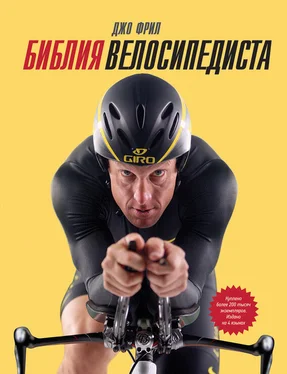
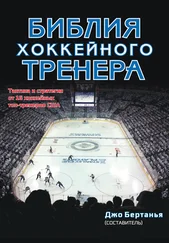
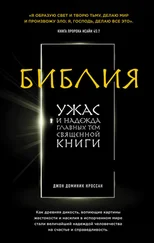
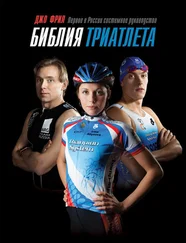



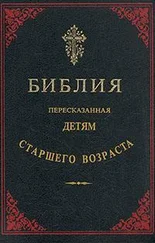

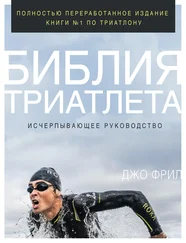
![Библия - Библия [Учебное издание]](/books/433190/bibliya-bibliya-uchebnoe-izdanie-thumb.webp)
